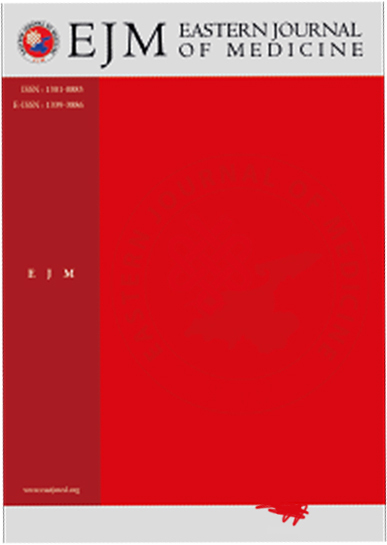Investigation of the Predictive Value of Amino Acids for Tuberculous Meningitis, Aseptic Meningitis and Bacterial Meningitis
Irfan Binici1, Zübeyir Huyut2, Hamit Hakan Alp2, Halil Ibrahim Akbay2, Hasan Karsen3, Mehmet Parlak4, Şükrü Akmeşe51Van Yüzüncü Yıl University Medical Faculty, Department of Infectious Diseases and Clinical Microbiology Van, Turkey2Van Yüzüncü Yıl University Medical Faculty, Department of Medical Biochemistry, Van, Turkey
3Harran University Medical Faculty, Department of Infectious Diseases and Clinical Microbiology, Sanliurfa, Turkey
4Van Yüzüncü Yıl University Medical Faculty, Department of Medical Microbiology Van, Turkey
5Harran University Health Services Vocational School Pharmacy Services Program Sanliurfa, Turkey
INTRODUCTION: In our study, we aimed to detect amino acid changes, if any, by comparing the levels of amino acids in cerebrospinal fluid (CSF) samples of patients with aseptic, bacterial, and tuberculous meningitis and healthy individuals.
METHODS: Patients diagnosed with aseptic meningitis (n=41), tuberculous meningitis (n=21) and bacterial meningitis (n=41) and a healthy control group consisting of 64 healthy individuals with similar gender and age characteristics were included in the study. 2 mL of cerebrospinal fluid specimens were obtained from all patients and healthy volunteers and stored at -80 °C until the study day. The amino acid measurements were performed using commercially available liquid chromatography-tandem mass spectrometry method (LC-MS/MS).
RESULTS: The levels of 1-methyl histidine, alanine, asparagine, histidine, isoleucine, lysine, methionine, norvaline, ornithine, phenylalanine, proline, sarcosine, threonine, tyrosine, valine in the aseptic, tuberculosis and bacterial meningitis groups were statistically higher than those of the healthy control group. The levels of all amino acids except cystine, glutamic acid, homo-citrulline, and taurine in the patients with aseptic meningitis were statistically significantly higher than in the healthy control group. The levels of all amino acids except homocitrulline, and tryptophan were statistically significantly higher in the patient group with tuberculous meningitis than in the healthy control group. The levels of all amino acids except glutamic acid were statistically significantly higher in the patient group with bacterial meningitis than in the healthy control group.
DISCUSSION AND CONCLUSION: Amino acid levels were impaired in these patients and that some amino acids showed promise as a biomarker in the differentiation of meningitis types.
Keywords: Meningitis, amino acids, liquid chromatography-tandem mass spectrometry
Manuscript Language: English














